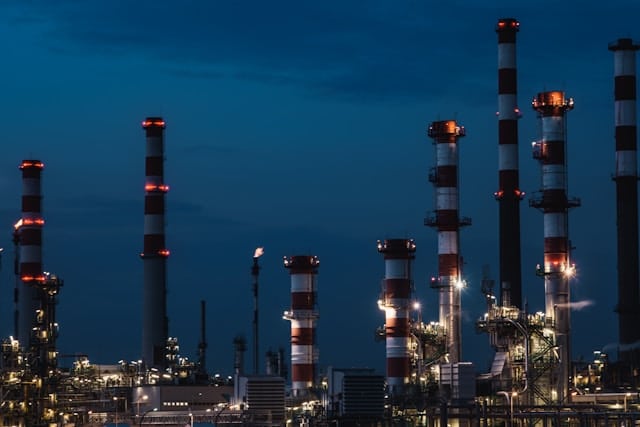As the global population continues to grow, so too does the demand for energy. The need for power is ever-present, and it is seen in everything from the smallest handheld devices to the largest industrial machines. In an era where everything runs on electricity, the way we store and manage this power becomes crucial. Enter batteries and supercapacitors.
However, conventional batteries have their limitations and challenges. They can store high amounts of energy but often suffer from slow charging rates and limited lifespan. As a solution to these issues, the world is now looking to a new technology known as supercapacitors or ultracapacitors. But what is their future in energy storage systems? Let’s delve into this intriguing topic.
A lire aussi : The advantages of MyImageGPT for non-designers
Supercapacitors and Their Unique Properties
Before we discuss their future applications, it’s important to understand what supercapacitors are and what sets them apart from traditional energy storage systems like batteries. Supercapacitors, also known as ultracapacitors, are a type of energy storage device that can store and release energy at high rates.
Unlike batteries that rely on chemical reactions to produce electrical energy, supercapacitors store electrical energy by physically separating positive and negative charges—much like a static charge. This physical process allows supercapacitors to charge and discharge much faster than batteries, and endure millions more charge and discharge cycles.
A lire en complément : How Is Technology Assisting in Real-Time Air Quality Monitoring?
Supercapacitors have a higher power density than batteries, meaning they can deliver or absorb energy at a much faster rate. This makes them ideal for applications that require fast bursts of energy, such as electric vehicle acceleration or regenerative braking.
Renewable Energy Applications
Renewable energy sources such as solar and wind power are intermittent by nature. These sources produce power in abundance during specific periods, and none in others. For instance, solar power systems generate power during the day but not at night. This characteristic poses a significant challenge to the integration of renewable energy sources into the power grid.
Supercapacitors, with their ability to charge quickly and discharge large amounts of power in a short time, can help overcome this challenge. They can store excess energy produced during periods of abundance and dispatch it quickly when there is a surge in demand or a drop in production.
In a solar power system, for example, a supercapacitor can store excess power generated during the day and deliver it during the evening peak demand. It can also provide power in the event of a sudden cloud cover, ensuring a steady and reliable power supply.
Role in Electric Vehicles
The electric vehicle market is growing rapidly as more consumers are becoming conscious of their carbon footprint. As this happens, the demand for efficient, reliable, and fast-charging energy storage systems is on the rise.
Supercapacitors, with their high power density and fast charge-discharge capabilities, can play a significant role in meeting this demand. They are already being used in some electric vehicles to provide quick bursts of power for acceleration and to capture energy during regenerative braking.
In hybrid electric vehicles, supercapacitors can work in tandem with batteries—where the battery provides steady, long-term energy and the supercapacitor offers quick, short-term power for acceleration and deceleration. This collaboration results in an efficient, high-performance, and durable hybrid system.
High Voltage Applications
In high voltage applications, supercapacitors can offer significant advantages over batteries. Traditional batteries can suffer from degradation and shortened life span when subjected to high voltage operations. Supercapacitors, however, can withstand high voltage applications without significant degradation, thanks to their physical energy storage mechanism.
High voltage systems, such as those used in power grid stabilization, can benefit greatly from the use of supercapacitors. They can provide fast, short-term power to stabilize the grid during periods of high demand or in the event of a power outage.
The Road Ahead
The future of supercapacitors in energy storage systems is promising. With their unique properties and potential in various applications, supercapacitors could revolutionize how we store and use energy.
However, challenges remain. Today’s supercapacitors offer less energy density compared to batteries—meaning they can’t store as much total energy. They are also currently more expensive than batteries on a per watt-hour basis.
Yet, advancements in supercapacitor technology are being made, and as these issues are addressed, the use of supercapacitors in energy storage systems is likely to become more widespread. The world is on the brink of an energy revolution, and supercapacitors are poised to play a pivotal role in it.
Supercapacitors in Energy Management
A crucial consideration for the acceptance and widespread implementation of ultracapacitors is their association with energy management. Energy management plays a pivotal role in balancing energy production and consumption. It includes energy harvesting from renewable sources and the efficient use of energy in various applications.
Supercapacitors, due to their superfast charging and discharging ability, can assist in maintaining the balance of power supply and demand. They can supplement the grid during peak load times when the demand is high and store excess energy when demand is low. This buffering capability makes supercapacitors an attractive choice for smart grid applications.
In addition, supercapacitors can also play an essential part in optimising energy usage in electric vehicles. For instance, their capability to quickly absorb energy makes them excellent for regenerative braking systems in electric vehicles. When the vehicle decelerates, the braking energy is captured and stored in the supercapacitor and then used for acceleration or routine operations of the vehicle. This energy recovery system contributes significantly to enhancing vehicle efficiency and reducing energy consumption.
The Role of Graphene in Ultracapacitor Development
For supercapacitors to become more competitive in the energy storage market, their energy density needs to improve. Enter graphene. This wonder material, a single layer of carbon atoms arranged in a two-dimensional honeycomb lattice, holds enormous potential for enhancing the performance of supercapacitors.
Research into graphene-based supercapacitors has shown promising results. Graphene has an exceptionally high charge storage capacity and electrical conductivity, contributing to increased energy and power density of the supercapacitor. The introduction of graphene into the design of supercapacitors is paving the way for supercapacitors to replace or work alongside lithium-ion batteries in a variety of applications, including electric vehicles and renewable energy storage systems.
Companies like Capacitech Energy and Skeleton Technologies are at the forefront of this innovation. They are developing and commercializing graphene-based supercapacitors that promise higher energy density, rapid charging, and longer lifespan.
Conclusion
The future of supercapacitors in energy storage systems seems bright, with multiple areas ripe for their application. Their unique properties, such as high power density and rapid charge-discharge capabilities, make them a viable solution for overcoming the limitations of traditional batteries. They are set to play a critical role in the fields of renewable energy, electric vehicles, high voltage applications, and energy management.
While challenges exist, such as lower energy density compared to lithium-ion batteries and higher costs, advancements in technology, particularly the use of graphene, are set to address these issues. As these challenges are overcome, the role of supercapacitors in energy storage systems is likely to increase, revolutionizing how we store and use energy.
The path to a more sustainable and efficient energy future will undoubtedly involve supercapacitors. Undeniably, we are on the cusp of an energy revolution, and supercapacitors are poised to be a driving force in this transformation. Time will tell how these unique devices reshape our energy landscape.






